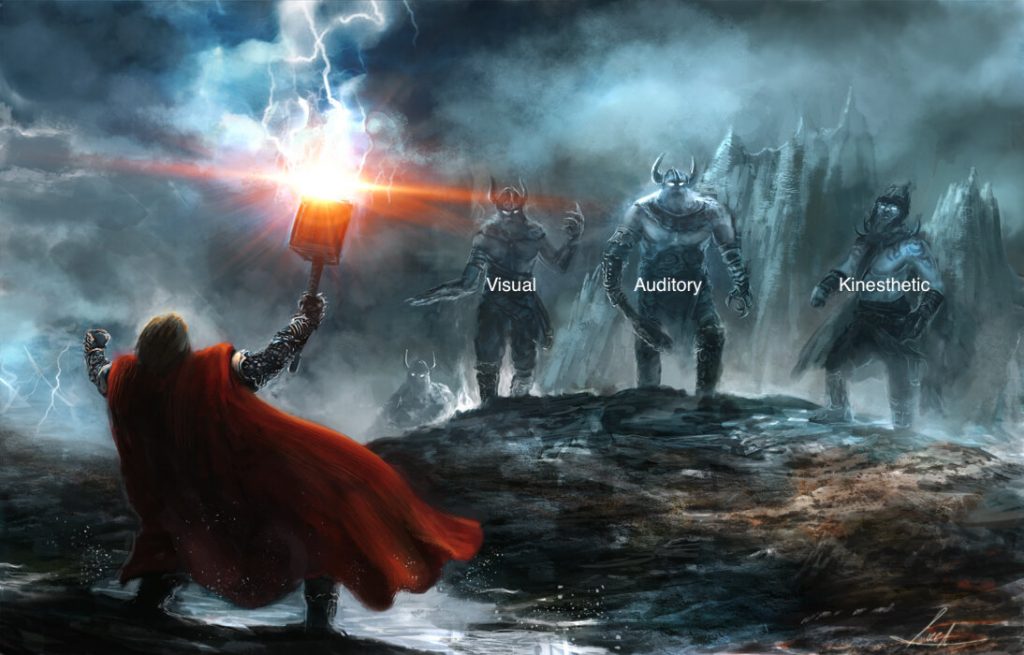What do Nessie (the Loch Ness monster), Thor, and learning styles all have in common? There is no scientific basis that any one of them exists. Thor and Nessie, while fun, are harmless—the myth of learning styles, however, is a little more dangerous.
Here are three reasons why:
1. There is little to no research to back them up. There’s a lot of noise out there about learning styles, especially VAK (visual, auditory, kinesthetic); however, there’s very little scientific research to prove that teaching to a student’s ‘preferred’ learning style improves their learning and retention. Jay Lynch wrote an excellent article Mythbusters: A review of research on learning styles, where he states:
“…there is a shocking lack of evidence to support the core learning styles claim that customizing instruction based on students’ preferred learning styles produces better learning than effective universal instruction.”
2. The modality should fit the content, not the other way around. If you are teaching an auditory concept, such as the differences between alto and soprano voices, it makes sense to use sound. If you are teaching a visual concept, such as how different apertures on a lens affect the light entering the camera, showing a visual image of each aperture opening is a great option. When teaching children to tie their shoes, the kinesthetic method is to have them work on a pair of shoelaces. In each of these instances, we are not teaching a learner’s ‘style’—instead, we are using the best modality for the type of learning.
When teaching a concept, you are asking the learner to remember the meaning. Meaning-based information should include a variety of modalities to suit the concept(s). Combining modalities and providing content using multiple methods will improve learning and enhance the learner’s experience. Professor Daniel Willingham’s quick YouTube video, Learning Styles don’t Exist, provides some additional examples regarding modality and learning.
3. Who has time to create multiple content versions for every topic or piece of learning?
We know that designers and subject matter experts have a lot of competing tasks, vying for their attention. Asking them to create a visual, auditory, and a kinesthetic option for each of their concepts will not be met with much enthusiasm.
Instead, ensure you are consulting with them on the best options for the types of information they are teaching and allow for a variety of modalities based on content. Doing this will ensure you are reaching the broadest possible audience, and that learners are engaged in a variety of ways.
Letting the content drive the modality and offering alternative methods for learners to take in the information is, based on the research, the best way to cast a wide net. You may not catch Nessie, but you will capture a lot more learners than if you were only using a fishing pole
What are your thoughts on learning style? We would love to hear from you because we are all in this together, and together, we learn.

